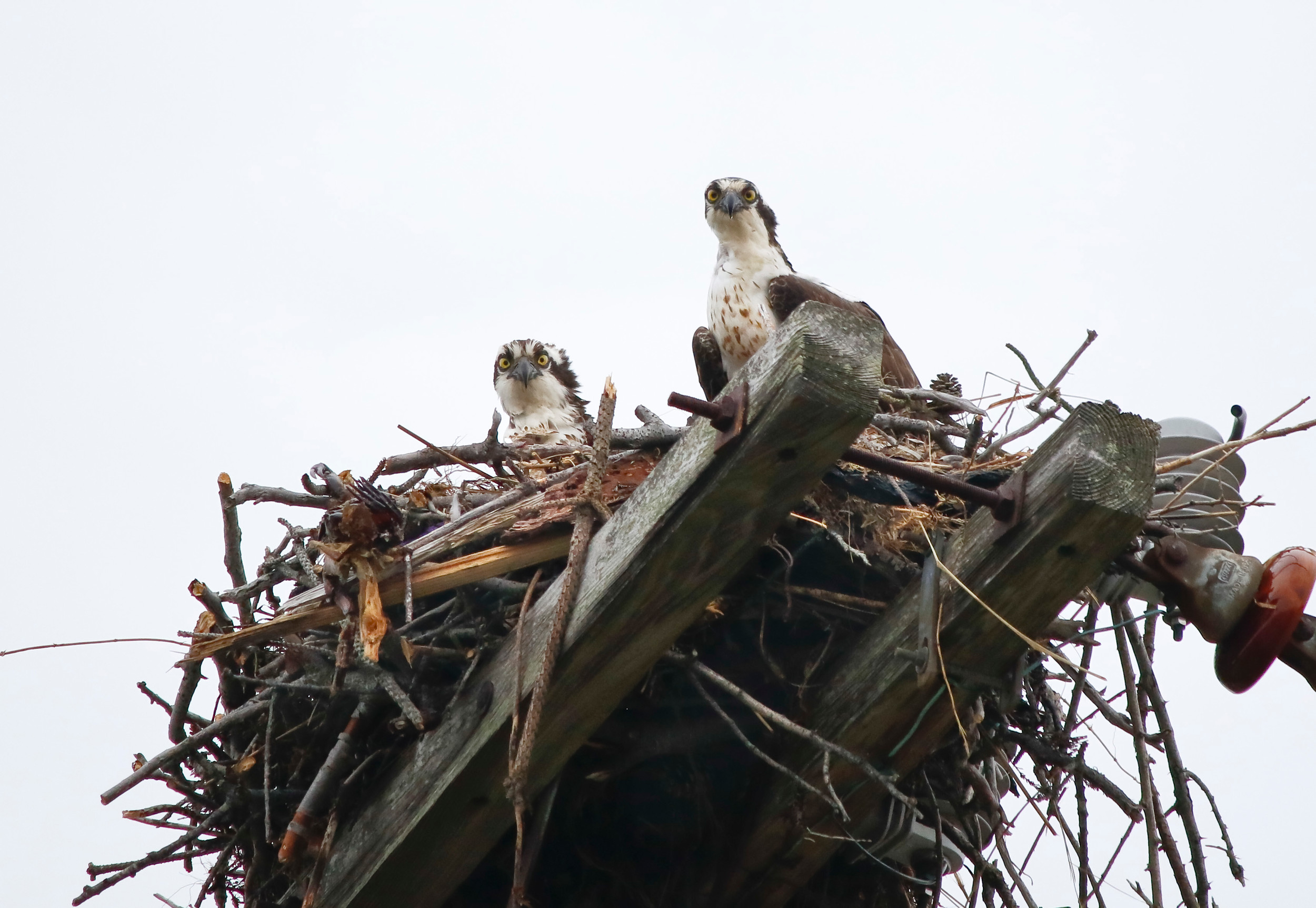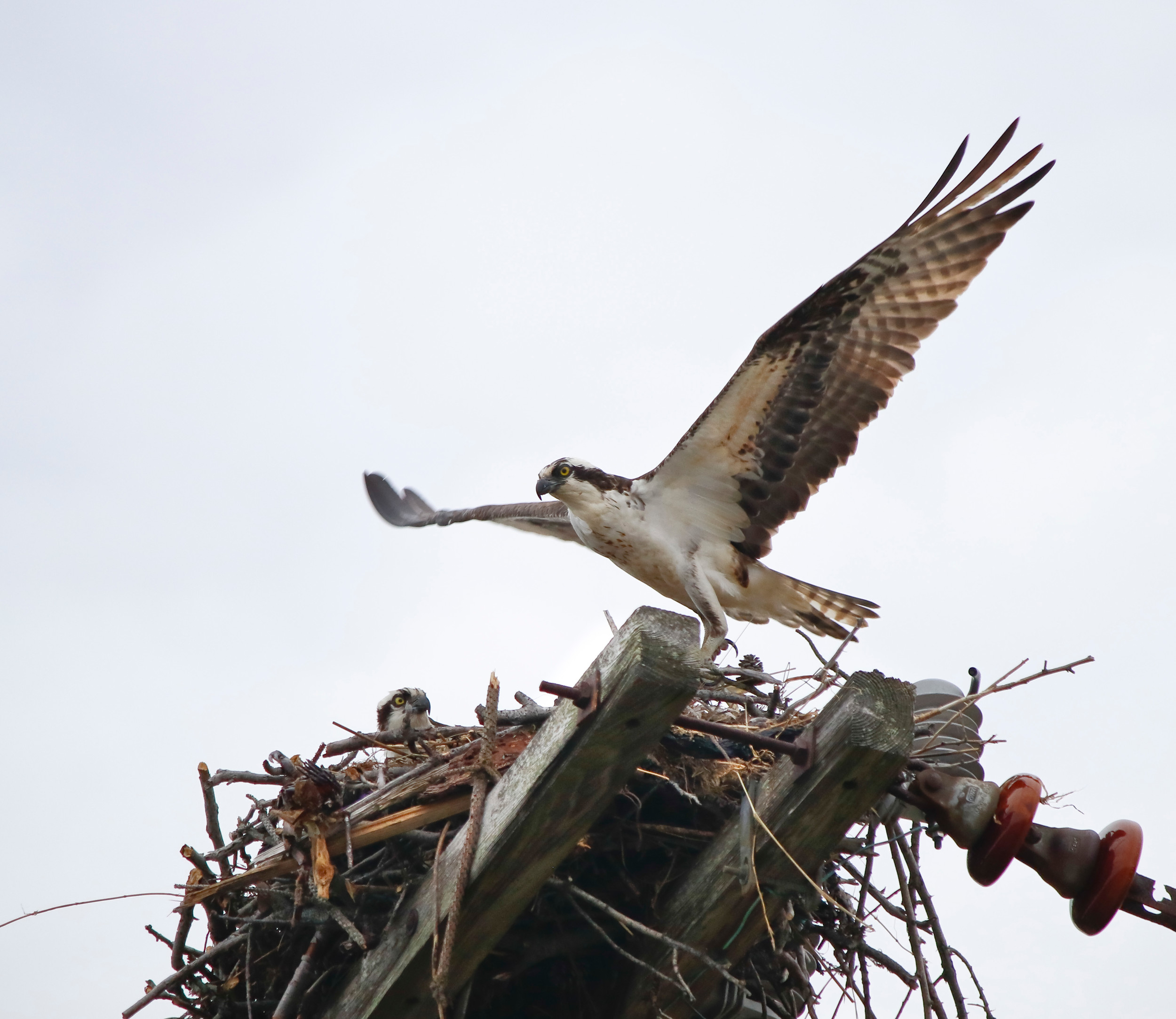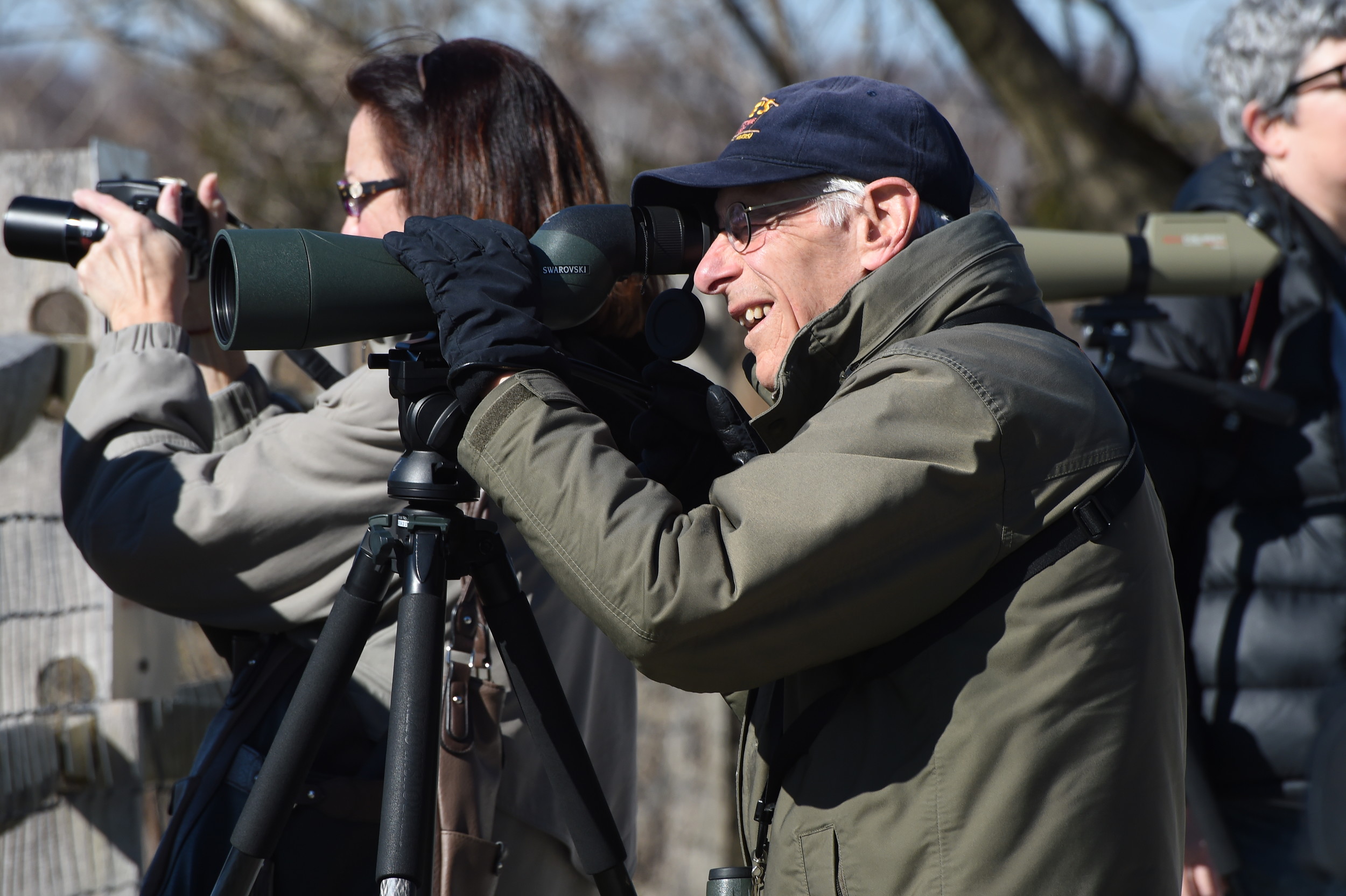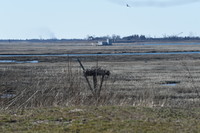Long Island welcomes back osprey for the summer
Soaring above the shoreline, but often going unnoticed, is a raptor that makes its home right here in Merrick and other communities across the Island for the summer.
Osprey, also known as sea hawks or fish hawks, have returned for the season to raise their chicks. With striking golden eyes, fuzzy white heads and large brown wings, the osprey are closer to us than one may think. Just look up.
Marshes and shallow wetlands make Long Island the perfect place for the osprey to spend the summer months, as their diet is composed entirely of fish.
Many osprey on Long Island have built their nests on man-made nesting platforms. The tall platforms are located in shallow water, out of the way of trees and other tall structures, for a 360-degree view of the area.
According to the International Osprey Foundation, a good osprey nesting platform should be a least three feet by three feet, and be able to support a weight of 300 pounds.
Michael Farina, a conservation biologist at the Oceanside Marine Nature Study Area, said that the platforms have been a great help in growing Long Island’s population of osprey.
“There are now more osprey then there are nesting platforms,” he said. “Osprey have made nests in trees by the water, and other man-made structures such as tele-phone poles and channel markers all over the south shore.”
According to Farina, the osprey have become the main attraction for the study area’s visitors. A boardwalk allows visitors to walk right underneath the osprey platform for an up-close look at the breeding pair and their chicks.
“People plan their entire trip around when the osprey are here,” said Farina. “Nest-ing pairs arrive in March or April to lay their eggs. Each bird is a little different, but eggs are usually hatching around this time.”
There are over 40 osprey nesting platforms in the Town of Hempstead’s 17,000 acres of wetlands. The platforms were built by the Hempstead Conservation and Waterway Department as part of an organized effort to bring the birds of prey back to Long Island’s south shore.
This effort began in the mid 1970s after osprey were classified as an endangered species. DDT-induced eggshell thinning caused eggs to break before hatching, drastically reducing the population of breeding pairs.
“There were absolutely no osprey in the area during the 1970s,” said Betty Borowsky, a biology professor at Nassau Community College, and president of the South Shore Audubon Society. “The concentration of DDT in the food supply made osprey eggs too fragile. The mothers would sit on them, and they would break.”
After DDT’s agricultural use was banned in 1972, conservation efforts and habitat restoration have allowed the osprey to make a comeback.
The town began placing dead trees along the shoreline to attract breeding pairs to build their nests. Eventually, nesting platforms were introduced, which were stur-dier and out of the way of predators.
Borowsky said that the discontinuation of DDT, and other conservation efforts, have not only been beneficial to the osprey population, but to other birds of prey as well.
“We never used to see hawks and owls in this area, but now we see them every-where,” she said. “There have even been sightings of bald eagles.”
You can check out local osprey in nesting platforms at Norman J. Levy Park in Merrick, Wantagh Park, Cow Meadow Park in Freeport, the Oceanside Marine Na-ture Study Area, and many other spots.

 48.0°,
Overcast
48.0°,
Overcast 















